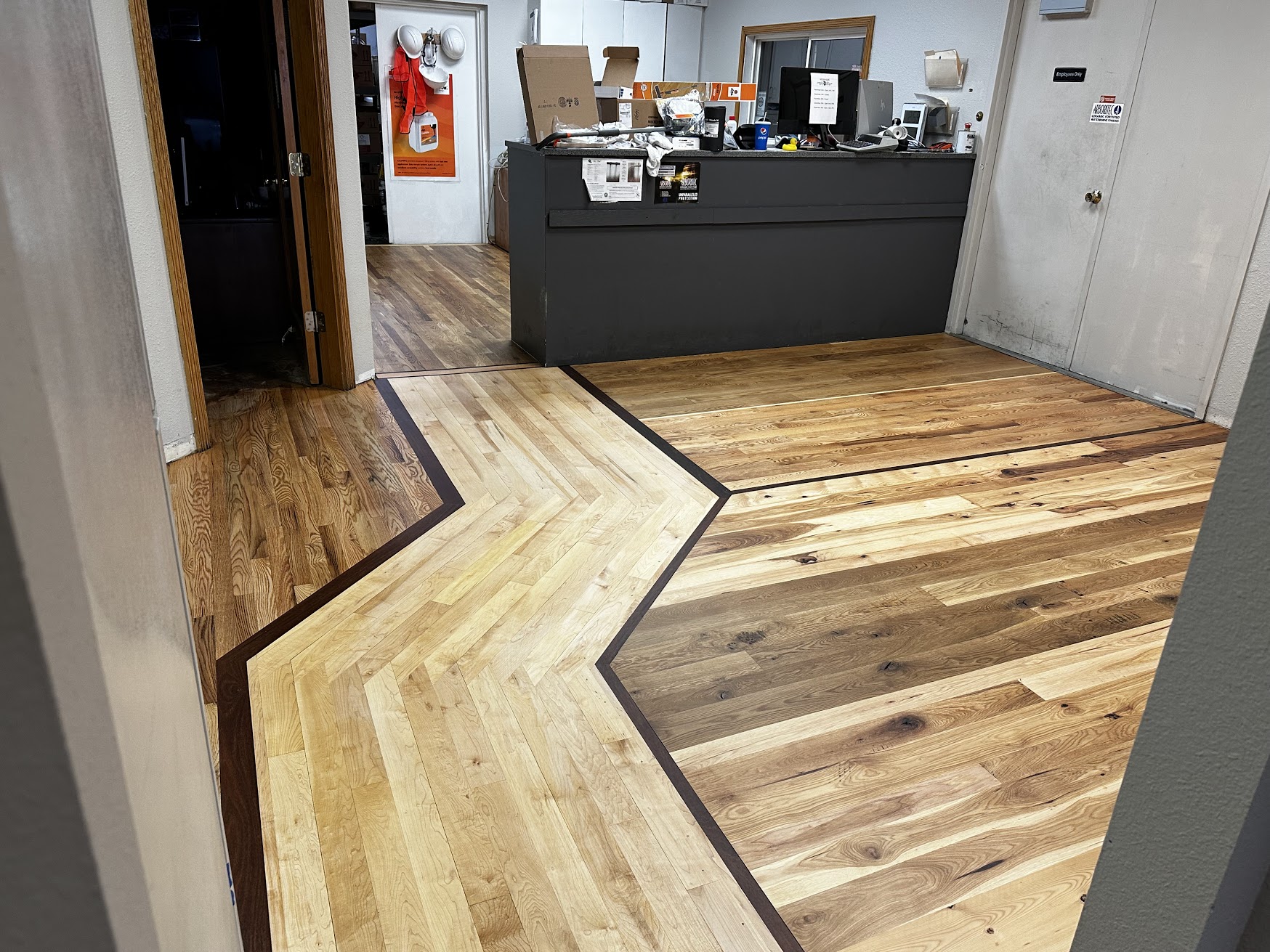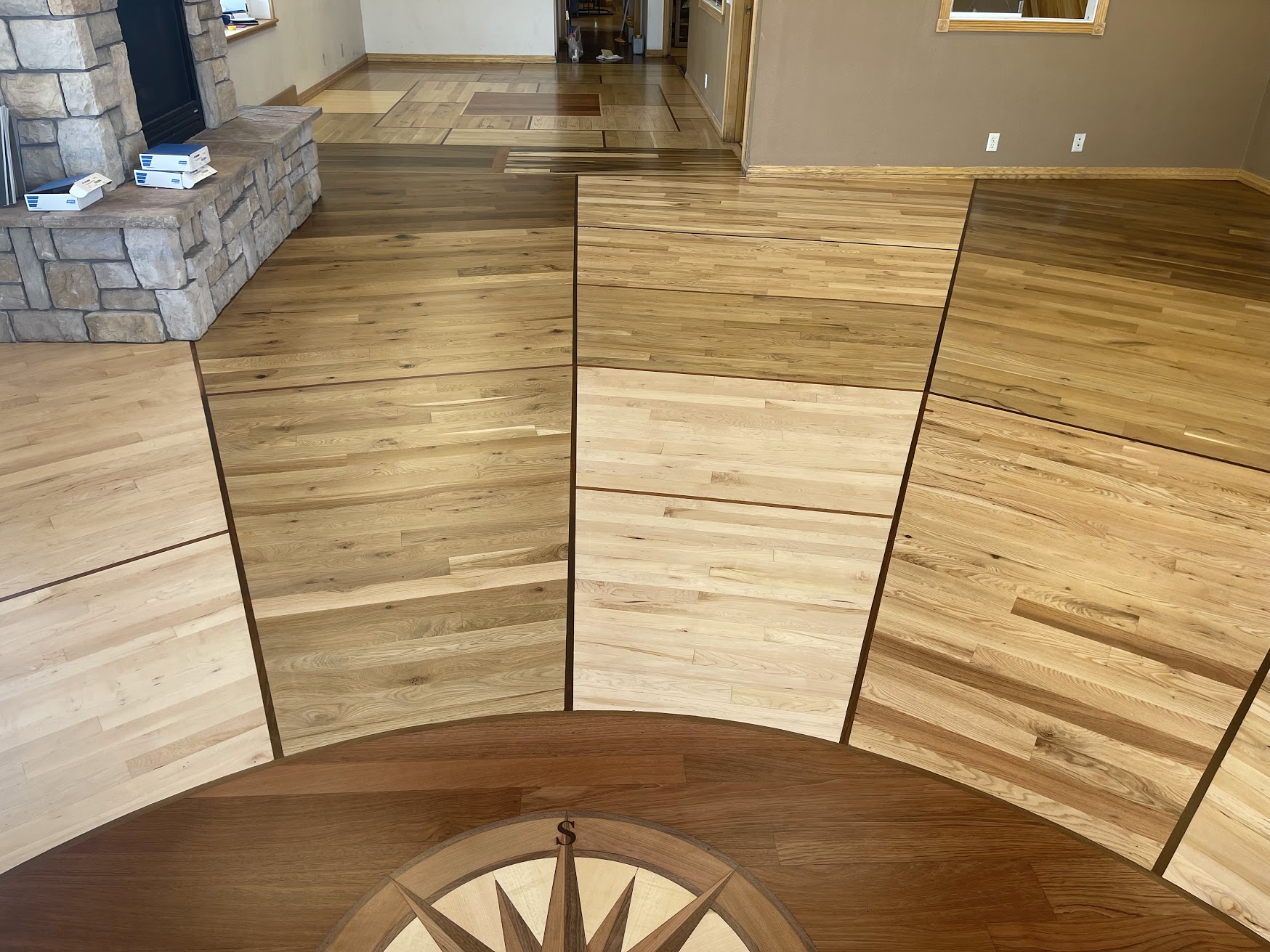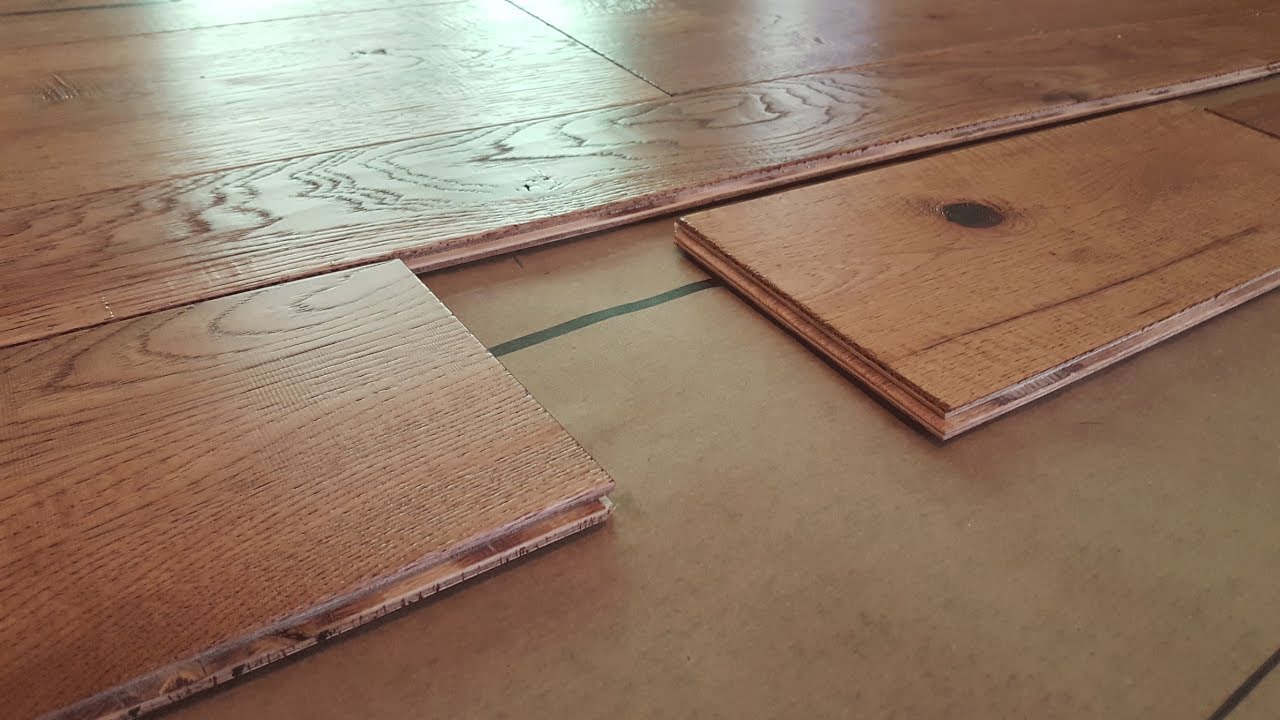Hardwood flooring is a lifetime investment that can last over 100 years. The top five wood species offer distinct advantages:
- Oak (1,290-1,360 lbf) remains the most popular choice for its versatility and affordability
- Maple (1,450 lbf) provides maximum durability for high-traffic areas
- Hickory (1,820 lbf) offers rustic appeal as the hardest North American wood
- Walnut (1,010 lbf) delivers luxury with rich chocolate tones
- Brazilian Cherry (2,350 lbf) combines extreme durability with exotic beauty that deepens over time.
Choosing the best hardwood for floors enhances your home’s appearance and increases property value significantly. Hardwood flooring is a lifetime investment that continues gaining character and beauty over the decades with proper care and maintenance.
Wood floors remain the gold standard of flooring surfaces because they combine durability, timeless appeal, and versatility. In 2023, hardwood flooring sales in the United States reached over $4 billion. Unlike other flooring options that require replacement every 10-15 years, quality hardwood can last over 100 years when maintained properly. The natural variations in grain patterns and color create a unique character that synthetic materials cannot replicate.
Basics of Hardwood Flooring
Hardwood flooring consists of natural wood planks milled from various tree species. The wood’s cellular structure, grain patterns, and density determine its performance characteristics and visual appeal in your home.
Hardness Rating System
The Janka hardness test measures wood’s resistance to denting and wear. This rating system helps homeowners select appropriate species for different areas:
- Softwoods (under 1,000 lbf): Better for low-traffic areas like bedrooms
- Medium hardwoods (1,000-1,500 lbf): Suitable for most residential applications
- Hardwoods (over 1,500 lbf): Ideal for high-traffic commercial and residential spaces
Grain Patterns and Character
Wood grain patterns significantly impact flooring appearance and performance. Tight, straight grains typically show less wear over time, while bold, irregular grains add visual interest but may require more maintenance.
Understanding grain patterns helps predict how floors will age and respond to refinishing. Some species develop more character marks over time, while others maintain a consistent appearance throughout their lifespan.
Color Stability and Light Sensitivity
Different wood species react differently to light exposure over time. Some woods darken with age, while others fade or change color dramatically when exposed to direct sunlight.
Photosensitive woods like cherry require careful window treatment consideration and may develop uneven coloring in areas with varying light exposure. Stable species maintain consistent coloring regardless of lighting conditions.
5 Best Woods for Hardwood Floors
The top hardwood species feature durability, beauty, and value for residential applications. Oak offers versatility and affordability, maple provides maximum hardness, hickory delivers rustic character, walnut adds luxury appeal, and Brazilian cherry creates exotic drama for discerning homeowners.
1. Oak – The Time-Tested Champion
Oak represents the most popular hardwood flooring choice for good reasons. This is the best hardwood for floors, as it offers exceptional durability, beautiful grain patterns, and versatility that complements virtually any design style. Red oak dominates the hardwood flooring market and continues growing at a rate of 3.9%. The species grows abundantly in North America, which makes it cost-effective compared to exotic options while maintaining superior quality standards.
Red Oak Characteristics:
- Janka Rating: 1,290 lbf – perfect for most residential applications
- Color Range: Warm pinks, golden reds, to rusty browns
- Grain Pattern: Prominent, visible graining with natural color variations
- Staining: Accepts stains exceptionally well for customization options
White Oak Features:
- Janka Rating: 1,360 lbf – slightly harder than red oak
- Color Range: Light tan to medium brown with subtle grain patterns
- Durability: Superior moisture resistance makes it ideal for kitchens
- Versatility: Works beautifully in traditional, rustic, and contemporary settings
At Rustic Wood Floor Supply, oak remains our most requested species because it delivers everything homeowners want: beauty, durability, and value. Our extensive oak collection includes both red and white varieties in multiple grades and plank widths.
If you’re drawn to red oak’s warm character or white oak’s refined elegance, our flooring specialists can guide you to the ideal choice for your space and lifestyle.
2. Maple – The Hardwood Powerhouse
Maple stands among the hardest domestic hardwood species available, making it suitable for floors in high-traffic commercial and residential applications. Its exceptional durability earned it recognition in bowling alleys and dance studios.
Key Maple Advantages:
- Janka Rating: 1,450 lbf – ideal for heavy foot traffic areas
- Color Consistency: Pale, creamy white with minimal color variation
- Grain Pattern: Fine, subtle grain that creates a clean, uniform appearance
- Scratch Resistance: Superior hardness resists denting and daily wear
Maple’s light color provides an excellent foundation for various stain colors, though its tight grain structure can make staining challenging. The species accepts clear finishes beautifully, showcasing its natural pale beauty.
Professional installation becomes crucial with maple due to its hardness. The dense wood requires sharp tools and experienced techniques to prevent splitting during installation.
3. Hickory – The Rustic Beauty
Hickory delivers the hardest domestic wood option available while providing distinctive character that enhances rustic and farmhouse design styles. This species offers unmatched shock resistance and density.
Hickory’s Unique Properties:
- Janka Rating: 1,820 lbf – hardest North American species
- Color Contrast: Dramatic variation from deep chocolate to creamy white
- Character Marks: Natural knots and grain variations add rustic charm
- Stain Retention: Excellent ability to hold stains for color customization
The species’ extreme color variation creates floors with natural character that tells a story. Each plank showcases different tones, creating dynamic visual interest that complements country and casual design themes.
4. Walnut – The Luxury Choice
American Walnut provides rich, sophisticated coloring that instantly adds warmth and elegance to any space. This premium species commands higher prices but delivers unmatched beauty and character.
Walnut’s Premium Features:
- Janka Rating: 1,010 lbf – softer than oak but adequate for most homes
- Color Range: Rich chocolate browns with occasional lighter sapwood
- Character: Natural knots and color variations create unique patterns
- Luxury Appeal: Premium appearance justifies higher investment costs
While walnut rates as a softer hardwood, proper finishing and maintenance ensure decades of beautiful performance. The species works best in moderate-traffic areas where its stunning appearance takes center stage.
Walnut’s natural oils provide some moisture resistance, though they require protection from heavy impacts that could cause denting in high-activity zones.
5. Brazilian Cherry – The Exotic Standout
Brazilian Cherry, scientifically known as Jatoba, represents one of the most popular exotic hardwood options. This species combines extreme hardness with dramatic color variations that create a stunning visual impact.
Brazilian Cherry Benefits:
- Janka Rating: 2,350 lbf – significantly harder than domestic options
- Color Drama: Rich reds and browns with blonde highlights throughout
- Photosensitive: Deepens and evens out over time with light exposure
- Durability: Exceptional resistance to wear and damage
The species’ extreme color variation creates floors that serve as artistic focal points. Over time, light exposure mellows the dramatic contrasts into more uniform reddish-brown tones.
Engineered vs. Solid Hardwood Flooring
Understanding construction differences helps homeowners select appropriate products for their specific installation conditions and performance expectations.
Solid Hardwood
Solid hardwood planks consist entirely of a single wood species cut from logs. This traditional construction method offers maximum refinishing potential and the longest lifespan.
Solid Hardwood Advantages:
- Multiple refinishing cycles: Can be sanded and refinished 6-10 times
- Maximum thickness: Typically 3/4 inch thick for superior stability
- Traditional installation: Nail-down installation over subfloor systems
- Longest lifespan: Can last over 100 years with proper maintenance
Installation Requirements:
- Subfloor requirements: Must be installed over wood subfloor systems
- Moisture restrictions: Cannot be installed below grade or in basements
- Acclimation time: Requires 3-7 days of acclimation before installation
Engineered Hardwood
Engineered hardwood flooring features a thin hardwood veneer bonded to plywood or high-density fiberboard cores. This construction provides stability in challenging installation conditions.
Engineered Hardwood Features:
- Dimensional stability: Resists expansion and contraction from humidity changes
- Versatile installation: Can be installed below grade and over concrete
- Multiple installation methods: Nail-down, glue-down, or floating installation options
- Cost efficiency: Generally costs less than solid hardwood options
Performance Considerations:
- Limited refinishing: Can typically be refinished 1-3 times, depending on veneer thickness
- Shorter lifespan: Generally lasts 30-50 years compared to solid hardwood
- Moisture tolerance: Better performance in basements and concrete installations
Making the Right Choice
Your selection between solid and engineered depends on installation location, budget constraints, and long-term expectations. Both options provide a beautiful hardwood appearance when properly selected and installed.
Consider solid hardwood for main living areas where maximum longevity and refinishing potential justify the investment. Choose engineered products for challenging installations or budget-conscious projects requiring hardwood aesthetics.
Factors Affecting Wood Selection for Hardwood Flooring
1. Traffic Levels and Lifestyle
Different areas of your home experience varying traffic levels that influence appropriate wood species selection. High-traffic entryways require harder species, while bedrooms can accommodate softer, more affordable options.
High-Traffic Areas Need:
- Janka ratings above 1,300 lbf: Oak, maple, hickory, or exotic species
- Tight grain patterns: Minimize wear pattern visibility over time
- Quality finishes: Aluminum oxide or polyurethane for maximum protection
Low-Traffic Areas Allow:
- Softer species: Cherry, walnut, or pine for budget considerations
- Character grades: Knots and color variations are acceptable in private spaces
- Lighter finishes: Natural oils or penetrating finishes for easier maintenance
2. Design Style Compatibility
Different wood species complement specific design aesthetics better than others. Understanding these relationships helps create cohesive interior design schemes.
- Traditional Styles: Oak and maple provide timeless appeal that works across decades of design trends
- Rustic/Farmhouse: Hickory and reclaimed species offer authentic character and weathered appearance
- Contemporary/Modern: Maple’s clean lines and walnut’s sophisticated tones suit minimalist aesthetics
- Luxury/Formal: Exotic species like Brazilian cherry create dramatic focal points in upscale settings
3. Budget Considerations
Hardwood flooring represents a significant investment that varies dramatically based on species selection, grade choices, and installation requirements.
Budget-Friendly Options:
- Red oak: Most cost-effective premium hardwood choice
- Ash: Similar to oak with slightly lower material costs
- Select grades: Fewer character marks reduce material costs
Premium Investments:
- Walnut: Luxury species with corresponding price premiums
- Exotic species: Import costs and rarity increase material expenses
- Wide planks: Larger dimensions command higher prices per square foot
Maintenance Tips for Hardwood Flooring
All hardwood species benefit from consistent maintenance routines that preserve appearance and extend lifespan significantly.
Daily Maintenance:
- Dust mopping: Removes abrasive particles that cause scratches
- Immediate spill cleanup: Prevents water damage and staining
- Furniture padding: Protects against scratches and dents from moving furniture
Weekly Cleaning:
- Hardwood-specific cleaners: pH-neutral products designed for wood floors
- Minimal moisture: Avoid excessive water that can cause cupping or warping
- Microfiber tools: Gentle cleaning implements that won’t scratch surfaces
Refinishing Timeline
Different species and finishes require refinishing at varying intervals based on wear patterns and maintenance quality.
Refinishing Indicators:
- Finish wear: Areas where protective coating has worn through to bare wood
- Deep scratches: Damage that penetrates through the finish into the wood surface
- Water stains: Discoloration that cleaning cannot remove
Most residential hardwood floors require refinishing every 7-10 years with normal use and proper maintenance. High-traffic commercial installations may need attention every 3-5 years.
Bottom Line
Selecting the best hardwood for floors requires balancing durability needs, aesthetic preferences, budget constraints, and installation requirements. Oak remains the most versatile choice for most homeowners, while maple excels in high-traffic applications, and exotic species create luxury focal points. Consider your home’s specific traffic patterns, design style, and long-term expectations when making your selection.
Want to transform your home with stunning hardwood floors?
At Rustic Wood Floor Supply, we’ve been helping homeowners discover the perfect flooring solutions for over two decades. Our extensive collection features premium domestic and exotic species sourced from sustainable forests. We provide complete solutions, including professional installation services, maintenance products, and ongoing support throughout your floors’ lifetime.
Visit us and feel the difference quality makes, or contact our flooring experts for a personalized consultation!
Frequently Asked Questions
What are the most durable hardwood species for high-traffic areas?
Maple (1,450 lbf), hickory (1,820 lbf), and Brazilian cherry (2,350 lbf) offer superior durability for high-traffic residential and commercial applications requiring maximum scratch and dent resistance.
How do I choose between solid and engineered hardwood flooring?
Choose solid hardwood for above-grade installations requiring maximum refinishing potential and longevity. Select engineered for below-grade, concrete, or budget-conscious installations needing dimensional stability.
Do hardwood floors require underlayment beneath them?
Solid hardwood typically installs directly over the subfloor without underlayment. Engineered floating floors require appropriate underlayment for sound reduction, moisture protection, and installation stability.
Is bamboo (or other alternative woods) a good substitute for traditional hardwood, and can it be refinished?
Bamboo offers an eco-friendly hardwood appearance but cannot be refinished like traditional hardwood. Quality varies significantly, and performance differs from genuine hardwood species in durability and longevity.
Sources:
https://www.statista.com/statistics/1080405/hardwood-flooring-sales-us/
https://www.grandviewresearch.com/industry-analysis/us-wood-flooring-market-report




